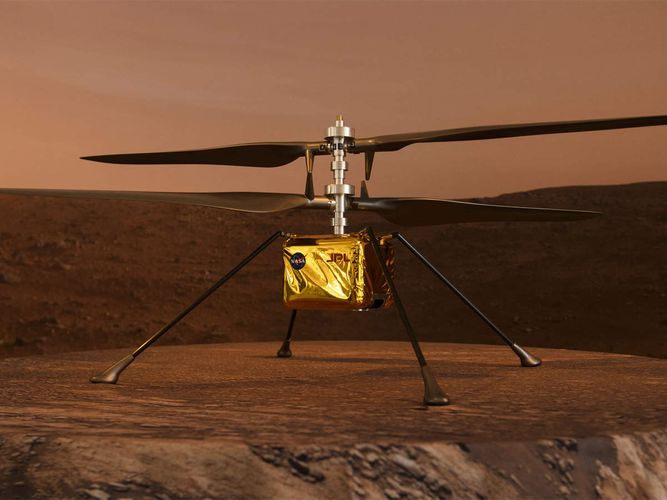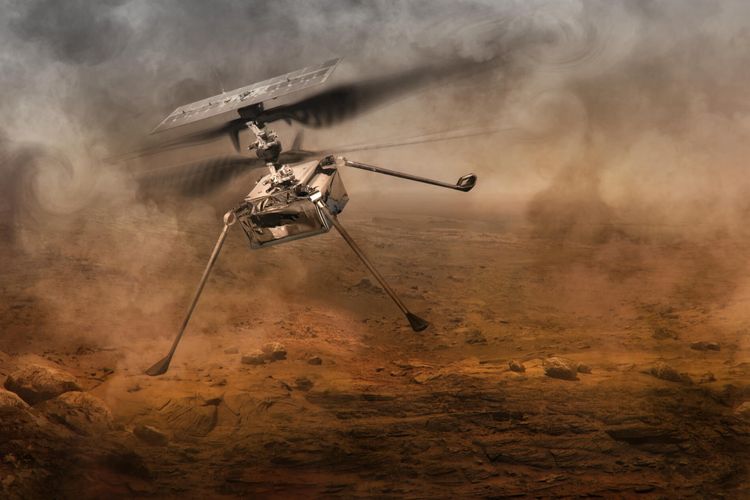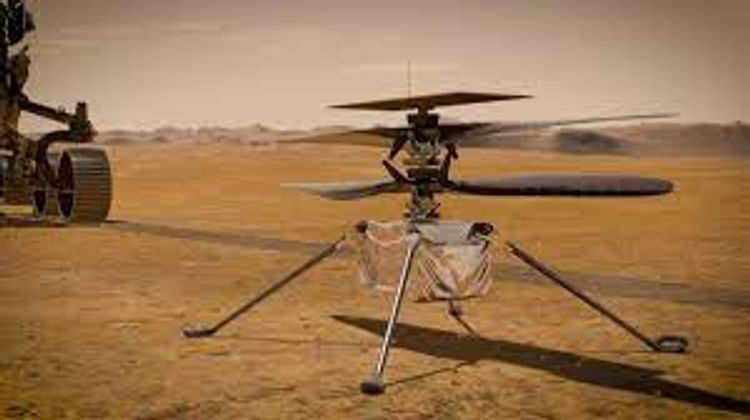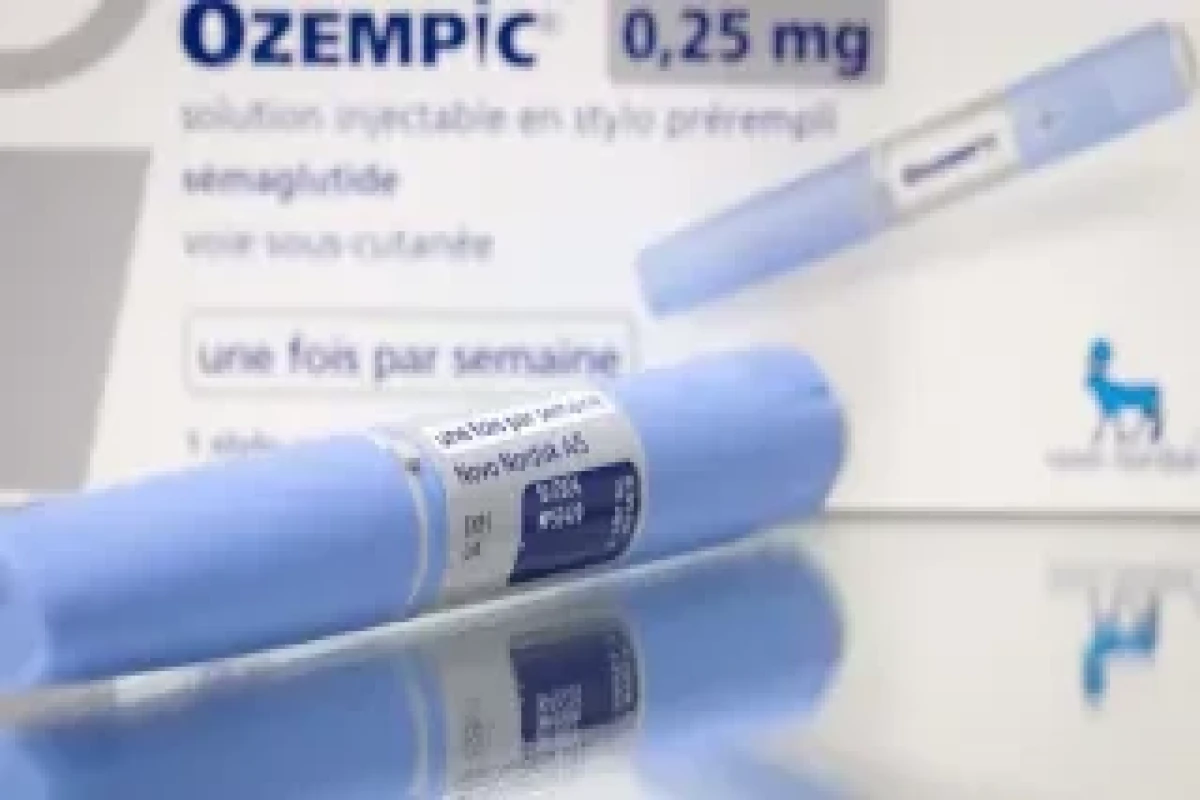The American space agency has successfully flown a small helicopter on Mars, APA reports citing BBC.
The drone, called Ingenuity, was airborne for less than a minute, but Nasa is celebrating what represents the first powered, controlled flight by an aircraft on another world.
Confirmation came via a satellite at Mars which relayed the chopper's data back to Earth.
The space agency is promising more adventurous flights in the days ahead.
The rotocraft was carried to Mars in the belly of Nasa's Perseverance Rover, which touched down in Jezero Crater on the Red Planet in February.
Ingenuity will be commanded to fly higher and further as engineers seek to test the limits of the technology.
"We've been talking for so long about our 'Wright Brothers moment' on Mars, and here it is."
This is a reference to Wilbur and Orville Wright who conducted the first powered, controlled aircraft flight here on Earth in 1903.
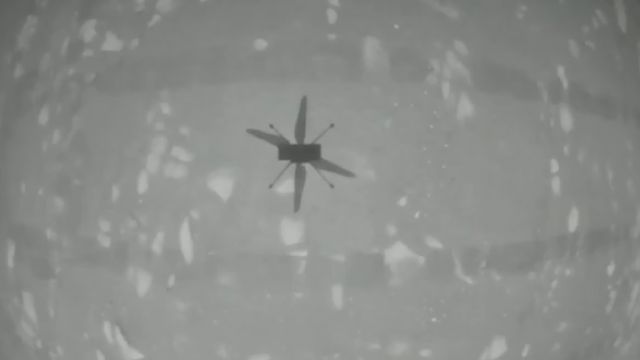
Ingenuity even carries a small swatch of fabric from one of the wings of Flyer 1, the aircraft that made that historic flight at Kitty Hawk, North Carolina, more than 117 years ago.
There were cheers in the JPL control centre as the first photos of the flight arrived back on Earth. In the background, Dr Aung could be heard saying: "It's real!"
To claps from her colleagues, MiMi Aung tore up her contingency speech - to have been used if the attempt had not worked.
The demonstration saw the Mars-copter - called Ingenuity - rise to about 3m, hover, swivel and then land. In all, it managed almost 40 seconds of flight, from take-off to landing.
Getting airborne on the Red Planet is not easy. The atmosphere is very thin, just 1% of the density here at Earth. This gives the blades on a rotorcraft very little to bite into to gain lift.
There's help from the lower gravity at Mars, but still - it takes a lot of work to get up off the ground.
Ingenuity was therefore made extremely light and given the power to turn those blades extremely fast - at over 2,500 revolutions per minute for this particular flight.
Control was autonomous. The distance to Mars - currently just under 300 million km - means radio signals take minutes to traverse the intervening space. Flying by joystick is simply out of the question.
Ingenuity has two cameras onboard.
A black-and-white camera that points down to the ground, which is used for navigation, and a high-resolution colour camera that looks out to the horizon.
A sample navigation image sent back to Earth revealed the helicopter's shadow as it came back down to land.
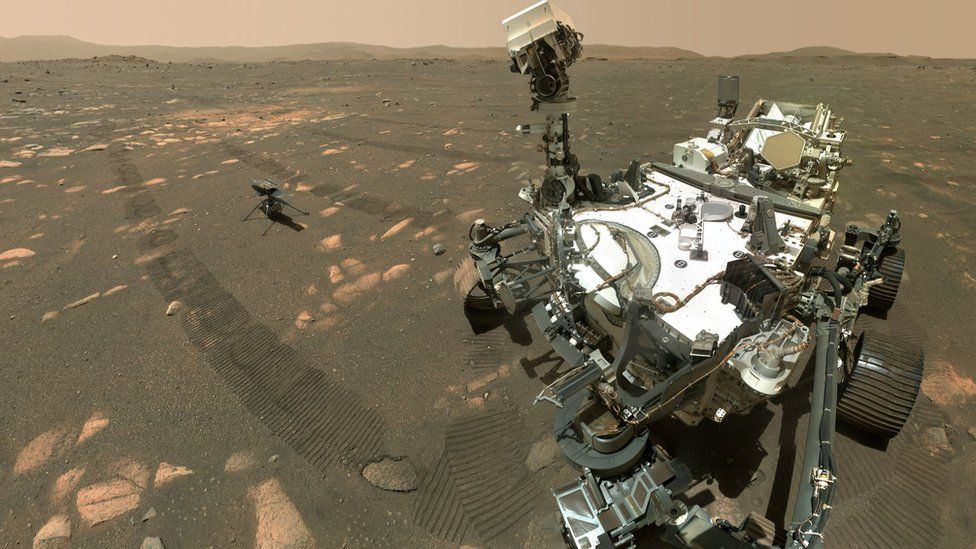
Nasa has announced that the "airstrip" in Jezero where Perseverance dropped off Ingenuity for its demonstration will henceforth be known as the "Wright Brothers Field".
The International Civil Aviation Organization (ICAO) - the United Nations' civil aviation agency - has also presented the agency and the US Federal Aviation Administration with an official ICAO designator: IGY, call-sign INGENUITY.
A successful maiden outing means that a further four flights will be attempted over the coming days, each one taking the helicopter further afield.
The hope is this initial demonstration could eventually transform how we explore some distant worlds.
Drones might be used to scout ahead for future rovers, and even astronauts once they eventually get to Mars.
Nasa has already approved a helicopter mission to Titan, the big moon of Saturn. Dragonfly, as the mission is known, should arrive at Titan in the mid-2030s.


